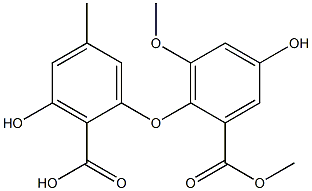Uses
Asterric acid is a fungal metabolite with anti-angiogenic properties, isolated from a number of Aspergillus and Penicillium species. It is an inhibitor of vascular endothelial growth factor (VEGF), inhibiting VEGF-induced tube formation of human umbilical vein endothelial cells.
Biological Activity
asterric acid is an eta receptor inhibitor.endothelin (et), a potent vasoconstrictor/pressor peptide consisting of 21 amino acid residues, was first isolated from the cultures of porcine aortic endothelial cells. analyses of a human genomic library reveals three forms of et (et-1, et-2 and et-3) with more than 70% homology with one another. in various organs, high affinity and specific receptors for et have been found, which have been classfied as receptors eta and etb. et-1 has potent and long-lasting vasoconstrictive activity, as a result of binding to the eta receptor.
in vitro
previous study asterric acid isolated as an active substance from the culture filtrate of a fungus, aspergillus sp. asterric acid had also been reported as a metabolite of a fungus. it was found that asterric acid had the property of inhibiting et-1 binding to the eta receptor of a10 cells, but it showed no inhibitory activity against anp and a ii binding at 10 mm, which indicated that asterric acid displayed as a specific inhibitor of et-1 binding [1].
IC 50
10 μm for et-1 binding to the eta receptor ofa10 cells
References
[1] ohashi, h. ,akiyama, h.,nishikori, k., et al. asterric acid, a new endothelin binding inhibitor. journal of antibiotics 45, 1684-1685 (1992).


